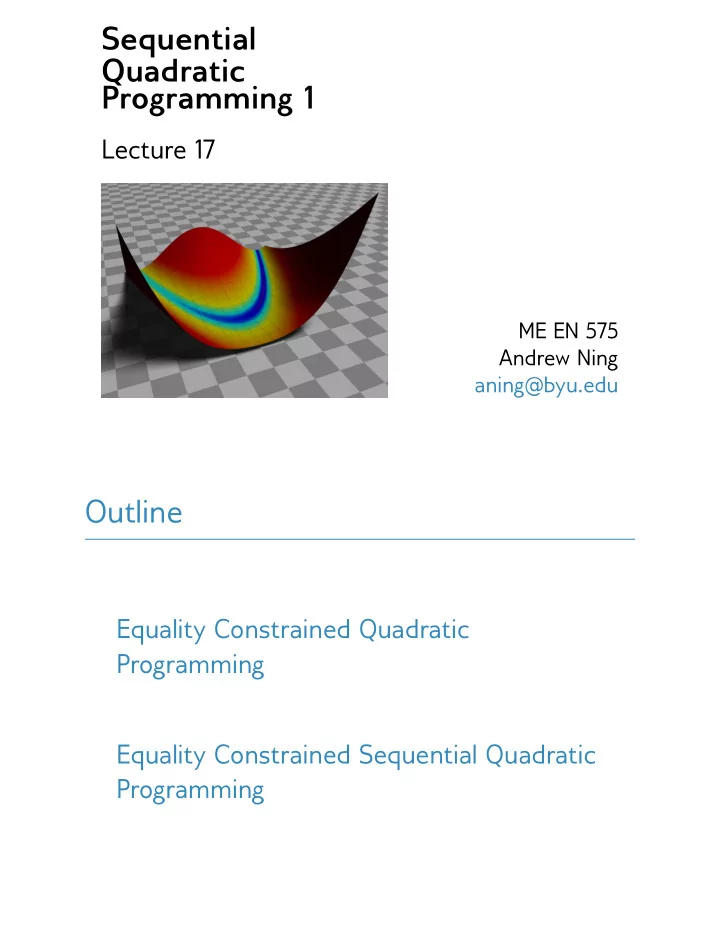

Sequential Quadratic Programming 1 Lecture 17 ME EN 575 Andrew Ning aning@byu.edu Outline Equality Constrained Quadratic Programming Equality Constrained Sequential Quadratic Programming
Quadratic Programming (QP) Equality Constrained Quadratic Programming
Pull out a sheet of paper, and try to solve the following analytically. Don’t solve it by variable substitution. Assume that there are lots of variables and equality constraints and so you couldn’t use that approach. x 2 − 8 x + y 2 − 12 y + 48 minimize subject to x + y = 8 Consider a general equality-constrained QP: 1 2 x T Qx + x T c minimize subject to Ax = b
We can directly find the global minimum of any equality-constrained QP just by solving a linear system. ∗ As long as Q is positive definite.
Example: Controls Linear Dynamical System: x t +1 = Ax t + Bu t x t : state at time t u t : control input at time t Define a cost function: N � x T t Qx t + u T J = t Ru t 0 (cost often represents deviations in the states from target values plus energy expended by control action)
Example: Aerodynamics Consider a variation on the wing example I showed last time. Let’s optimize the lift distribution γ . γ Equality Constrained Sequential Quadratic Programming
Now assume we have a general nonlinear equality-constrained optimization problem. f ( x ) minimize ˆ c j ( x ) = 0 , j = 1 , . . . , ˆ subject to m We locally approximate our problem as: 1 2 p T ∇ xx L k p + ∇ x L T minimize k p + L k with respect to p subject to ∇ x ˆ c k p + ˆ c k = 0
After simplification: c k ] T ∇ xx L k [ ∇ x ˆ p k − g k = ˆ ∇ x ˆ c k 0 λ k +1 − ˆ c k SQP Procedure
An alternative derivation of SQP (now shown here) shows that it is simply an application of Newton’s method (root finding) to the KKT conditions.
Recommend
More recommend